The two missing artworks linked to King Charles I’s collection
Posted on June 01, 2018
Treasure-hunter and provenance researcher Silvia Davoli is more determined than ever to continue her search for Horace Walpole’s missing Strawberry Hill collection. With Walpole’s Turkish dagger and the ghostly Falkland portrait still at large, Silvia turns her attention to two paintings with an astonishing royal pedigree in the hope that serendipity will intervene once again.
Again and again my hunt for Walpole’s lost treasures has been guided by serendipitous events. Whether it be the discovery of two versions of the missing Falkland portrait I uncovered while studying the Heinz archive or the chance visit of a Sotheby’s client who brought a Grand Tour souvenir mirroring Walpole’s lost fresco to the auction house’s New York office, serendipity has led me to make extraordinary findings in my search for Strawberry Hill’s scattered artworks and decorative objects.
Surely, I often think to myself, there must come a time when my luck will run out. Inspired by Walpole’s unwavering dedication to his temple of the arts, I fight on, testing my knowledge and my fortunes in the pursuit of every missing masterpiece of Strawberry Hill.
Of course, there are some truly remarkable hidden gems, which inspire me to fight even harder. I need your help more than ever to find them.
Among these glittering gems are two paintings: a portrait of a young man in fur described by Walpole as by Venetian artist Giorgione and a “Portrait of Marguerite de Valois, Duchess of Savoy” by Dutchman Antonis Mor. Both were displayed in Walpole’s great Gallery and both, I am fascinated to learn, are said to have originated from King Charles I’s collection, which was recently celebrated and in part reconstructed at the Royal Academy.
I have developed a particular obsession with Giorgione’s luxuriously robed young man whose whereabouts remain unknown. Lacking coordinates, I know that if I am to have any hope of tracing it now I first have to unravel its tangled chronology and uncover the face of the young man masked by the patina of history.
My quest begins with a watercolour of the west end of Walpole’s Gallery, which depicts the young man peering out from his carved frame in an intimate Giorgionesque incline (Please see Image 1 and 2), very much like this young man who now resides in Berlin’s Staatlichen Museen, please see Image 3. I imagine Walpole standing before the canvas searching the man’s gaze and settling on the words to describe him in his 1784 ‘Description of the Villa… With An Inventory of The Furniture, Pictures, Curiosities’:
‘A young man’s head… admirable nature… in the collection of Charles Ist… Topham’s Catalogue.’
What does Topham catalog mean? This is my first question.
Topham? What might he have to tell us about Walpole’s young man? I locate a copy of the Topham catalogue to which Walpole refers in the Office of the Surveyor at St James palace: ‘List of the Pictures belonging to the Crown at the time of Queen Anne bound with the Principal Pictures arras hangings and statues of King Charles the 1st with the prices for which they were sold, 1649’
I scour the pages of Topham’s catalogue to reassure myself and turn to a section, which reads as follows: ‘A young man holding a paper in his hand Giorgione’. To my great astonishment, as though Walpole himself was urging me on, I read a note scrawled in Walpole’s very own hand beside the entry:
‘now at Strawberry Hill’.
I eventually learn that Walpole bought the Giorgione man from the sale of the collection of Dr Robert Bragge in 1757. An art dealer, Bragge is praised as a ‘virtuoso’ in a 1743 letter written by Walpole to his friend Horace Mann. Walpole’s collection at Strawberry Hill even included a miniature portrait of Bragge by J. Deacon.
Unsatisfied with this finding, I contemplate ways to dig deeper into Giorgione’s young man’s past. I find a copy of the catalogue from Bragge’s collection and the front page details how some of Bragge’s paintings derived from the most esteemed Cabinets Abroad ‘among which the Duke of Tallard’s’. I am overjoyed to discover this tallies with the description of the Giorgione man in one of the extra illustrated copies of Walpole’s 1784 inventory:
‘This was in the collection of Charles Ist… in the collection of M. le Duc de Tallard, in whose Catalogue it is particularly described’.
Marie Joseph d’Hostun de La Baume-Tallard, Duke of Hostun, Duke of Tallard (1683-1755) was a friend of King Louis XIV and served two years as ambassador at the English Court at St James’s Palace. It is probably while in London that he bought the painting. The Duke was expelled from London by William III in 1702. Beguiled by this mysterious portrait, I know I cannot stop at the Duke and his expulsion but need to retrace its steps even further.
A copy of the Duke’s ‘Catalogue raisonné des tableaux, sculptures, tant de marbre que de bronze, desseins et estampes des plus grands maîtres’ offers us an even more enticing description of the young man:
‘Le Portrait d’une jeune homme vêtu d’une robe fourée tenant un gand à la main… vigoreusement peint et bien original’.
Finally, I am beginning to more clearly picture the young man clad in his fur-trimmed robe, arresting the viewer with his penetrating gaze. I know I could see him clearer still if I continue sleuthing.
Walpole, Bragge, Tallard, Queen Anne and King Charles I? I am dazzled by the painting’s royal roots and more energised than ever to trace its possible whereabouts.
The last remaining clue is to prove even more cryptic. In the catalogue of the 1842 Great Sale at Strawberry Hill, lot 92 sold on day 21 is described as: ‘A Young Man’s Head, in a rich black velvet dress trimmed with fur, in a carved frame by Giorgione… Bought by T.B Brown of Howland Street £110’.
T.B. Brown. None other than one of the restorers who worked at the National Gallery London for its first director, Charles Eastlake. Brown was no stranger to the art market having bought the portrait of the Marquis of Granby by Sir Joshua Reynolds at the Stowe Sale of 1848. The work now forms part of the Ringling Museum Collection after it was bequeathed by John Ringling in 1936. And £110 is decidedly a lot of money for the time!
Do you think Brown went on to sell Giorgione’s man to another private collector in a similar fashion? Is it plausible that this collector sold or bequeathed it to a museum that you have visited? What if it is now attributed to Giorgione or perhaps to Tiziano Vecelli or Bernardino Licinio?
In the Gentlemen Magazine, which provides a detailed review of the 1842 Great Sale I find fresh information. The painting bore an inscription that was never mentioned by the other sources: Aetatis Suae 18, 1526 (Aetatis suae meaning Age 18). Giorgione lived from 1478-1510, so if the date is really 1526 the portrait cannot be by Giorgione. Remember, of course, it is not unusual for attributions to Giorgione to be used to indicate a wider range of Venetian masters: Licinio, Palma il Giovane, Lotto, Tiziano. Perhaps my luck has finally run out. Or perhaps you have seen our missing painting under the name of Titian?
We will have to cast our net even wider now. Here are some key questions to ask yourself as you join the hunt:
A Portrait which seems to match our description although I cannot be sure, was recently purchased by the Norton Simon Museum, Pasadena, but unfortunately it is missing an inscription. Please see Image 4.
Your efforts to further our search will be rewarded when we have gathered together all of Walpole’s missing treasures once again in Strawberry Hill House and restored his gothic castle to its former ‘gloomth’. After all, the retraced portrait of ‘Marguerite de Valois’ offers proof that this prize is within our grasp.
Just when I thought the discovery of Walpole’s marble sarcophagus in Cambridge marked my last stroke of luck, serendipity reared its curious head again in my search for Marguerite. In his 1784 ‘Description’, Walpole locates the Duchess to the left of the chimney in the great Gallery: ‘Marguerite de Valois, duchesse de Savoie, sister of Henry 2d. of France… by sir Antonio More (…) This picture belonged to Charles I’. Unfortunately, in the 1781 View of the Gallery the portrait’s features are obscured. I could barely see a woman clutching something in her hands and what looks like a white collar and cap. Please see Image 5 and 6.
Despite these promising clues, I faltered in my search. I had sought out all of Antonis Mor’s women wearing black dresses and white bonnets, to no avail. None of them had the right dimension or provenance. What else had I to go on? I wondered whether I had hit yet another roadblock and imagined our young man and Marguerite lost forever in some dusty store room corner of an unpublished and unknown private collection with only tea services and ormolu candelabra for company. My anxiety was premature.
Fortune favoured me once again during one of my research trips to the Warburg Institute. While trawling the open access library, I took a moment to search the catalogue raisonné of the humanist painter Willem Key. This brand new catalogue captured my attention and I distractedly started to leaf through. Suddenly, I saw a Young Lady staring up at me and so strikingly similar to my Marguerite! I devoured the catalogue entry and even though there was no mention of Marguerite de Valois the provenance was there in black and white: Charles I and Horace Walpole.
There was the number of the painting’s lot at the Great Sale of 1842, there were the features of the painting echoing its description in Walpole’s words. I marvelled at the serendipity.
The Young Lady by Willelm Key appeared together with the Young Man by Giorgione in the Topham Catalogue, which meant that at the time of Queen Anne it was still in the Royal Collection. Again, next to the catalogue record, I discovered a tantalising clue suggesting an unmistakeable connection. Someone had scribbled ‘Strawberry Hill’ in pencil.
Marguerite also appeared in the Inventory of James II’s pictures in 1688 at Whitehall.
I began to wonder how it is she came to reside at Strawberry Hill and allowed my imagination to wander. Perhaps Walpole obtained the work while stepping in for his sister, Mary Churchill, Royal House Keeper of Kensington Palace, while she stayed in Nancy in 1764. After all, I understand it was around that time that a handful of paintings in the Royal Collection were probably sold.
The key to finding Marguerite was, as serendipity would have it, Key. On a whim, I decided to write to the author of the Key catalogue raisonné and the final puzzle piece slotted into place. The author placed me in contact with Marguerite’s current owner and just like that, another missing treasure restored.
Could the story of the missing Giorgione painting have as beautiful and simple a fairytale ending?
Put your super-sleuthing to the test and try searching for the young man’s portrait using the clues listed above. Good luck and don’t forget to get in touch with your discoveries via treasurehunt@strawberryhillhouse.org.uk.
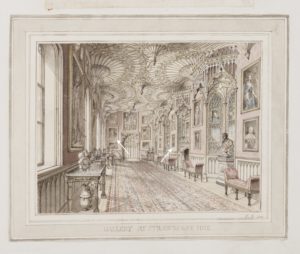
Image 1: Edward Edwards, Gallery at Strawberry Hill, pen and ink, courtesy of the Lewis Walpole Library: the tow arrows show where the two paintings a) Giorgione and b) the so called Marguerite de Valois by Antonis Mor now correctly attributed to Willem Key and identified as a Portrait of a Young Lady originally were located at Strawberry Hill. Top image: Edward Edwards, Gallery at Strawberry Hill, pen and ink, courtesy of the Lewis Walpole Library
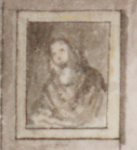
Image 2: Detail of the Portrait by ‘Giorgione’
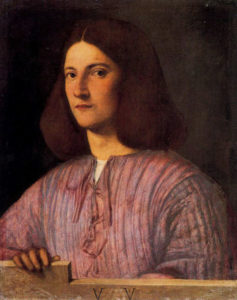
Image 3: Portrait of a Young Man, c. 1505 Gemäldegalerie der Staatlichen Museen zu Berlin
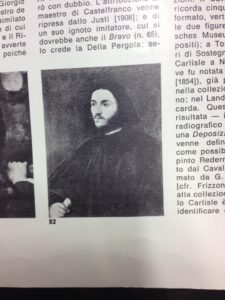
Image 4: Portrait of Young Man by Tiziano? by Giorgione? (ex Duveen, 1926; possibly Norton Simon Museum, Pasadena?)
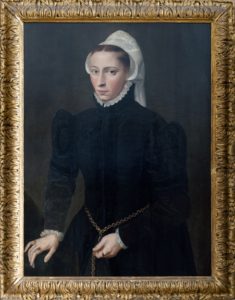
Image 5: Willem Key (1516–1568) Portrait of a Young Flemish Woman (Marguerite de Valois), 1559 © Private Collection
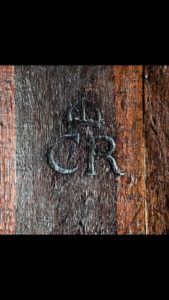
Image 6: Charles I’s collector mark